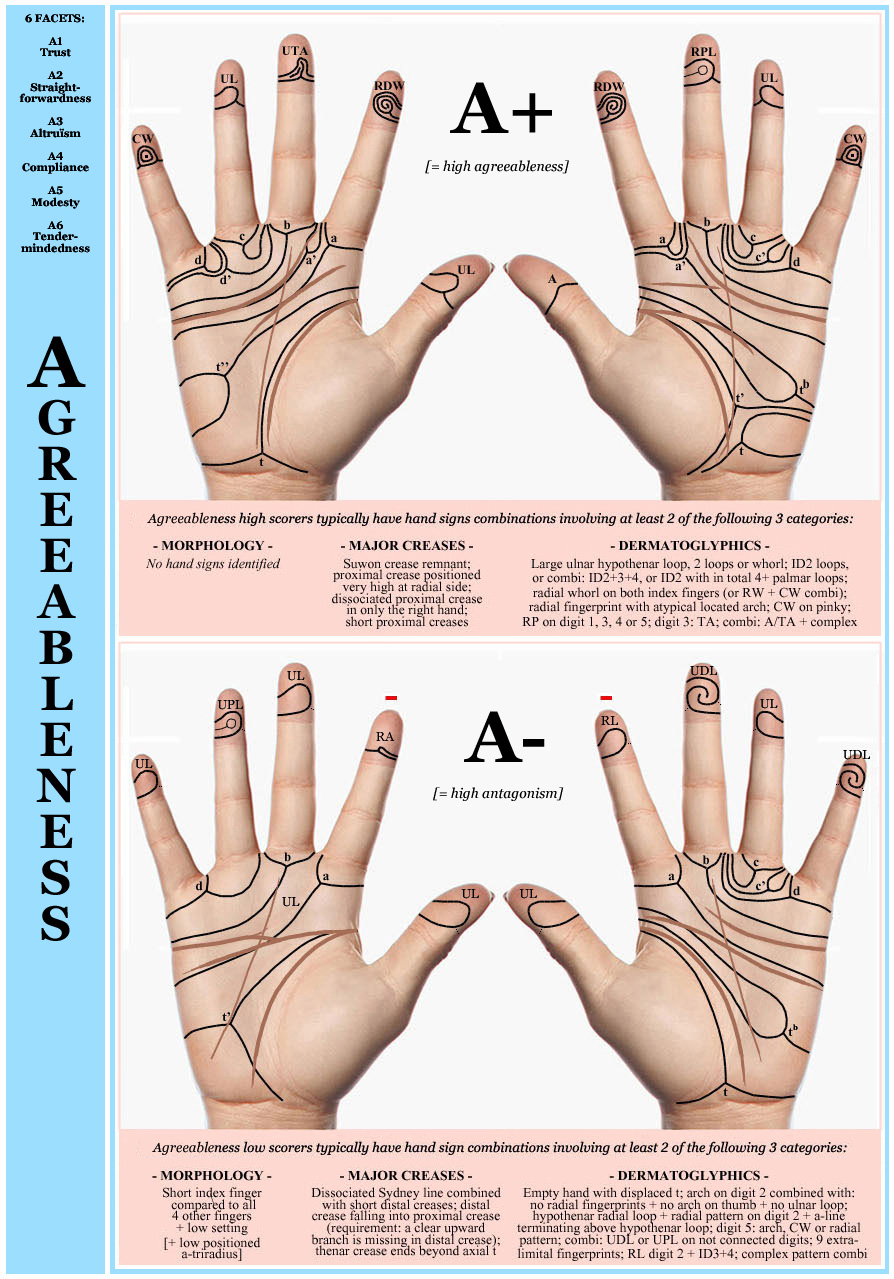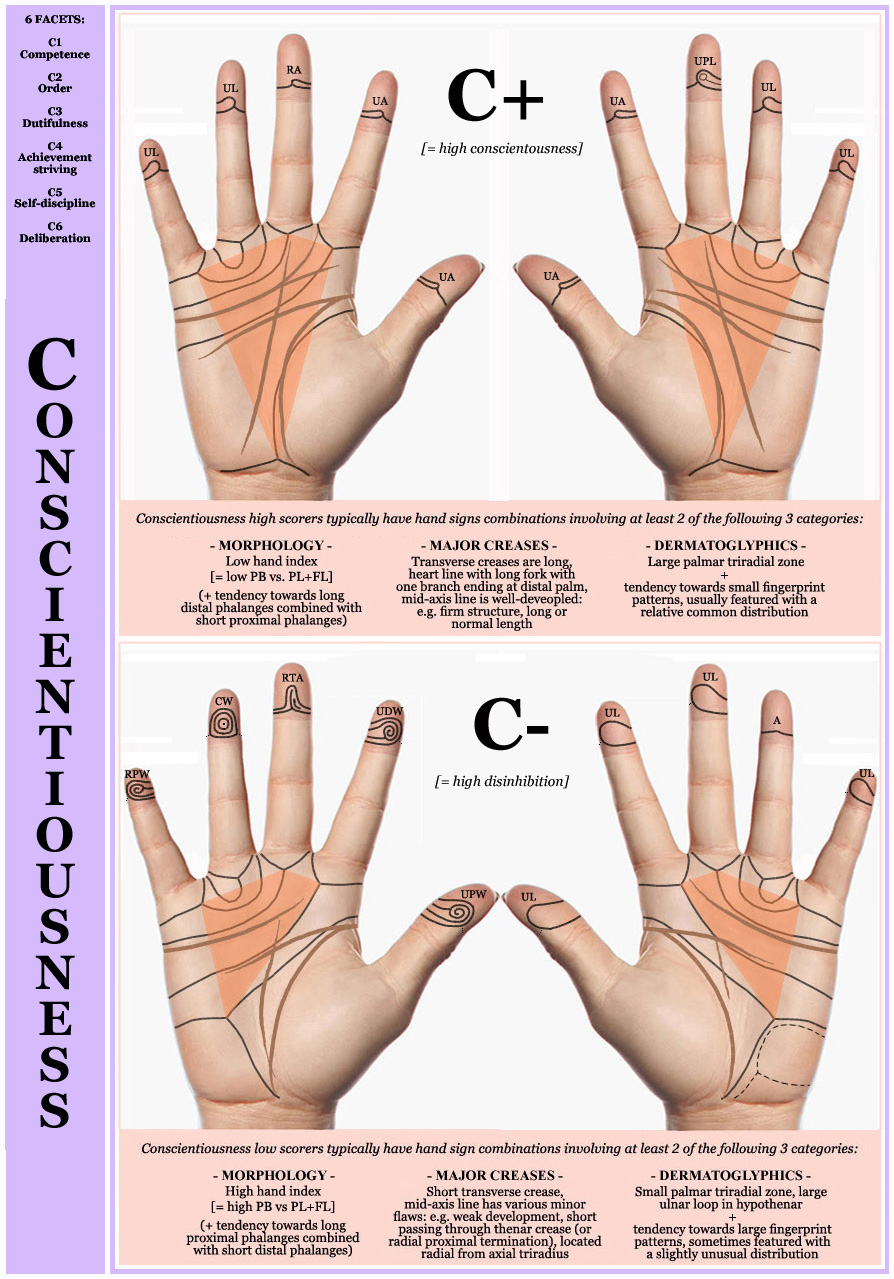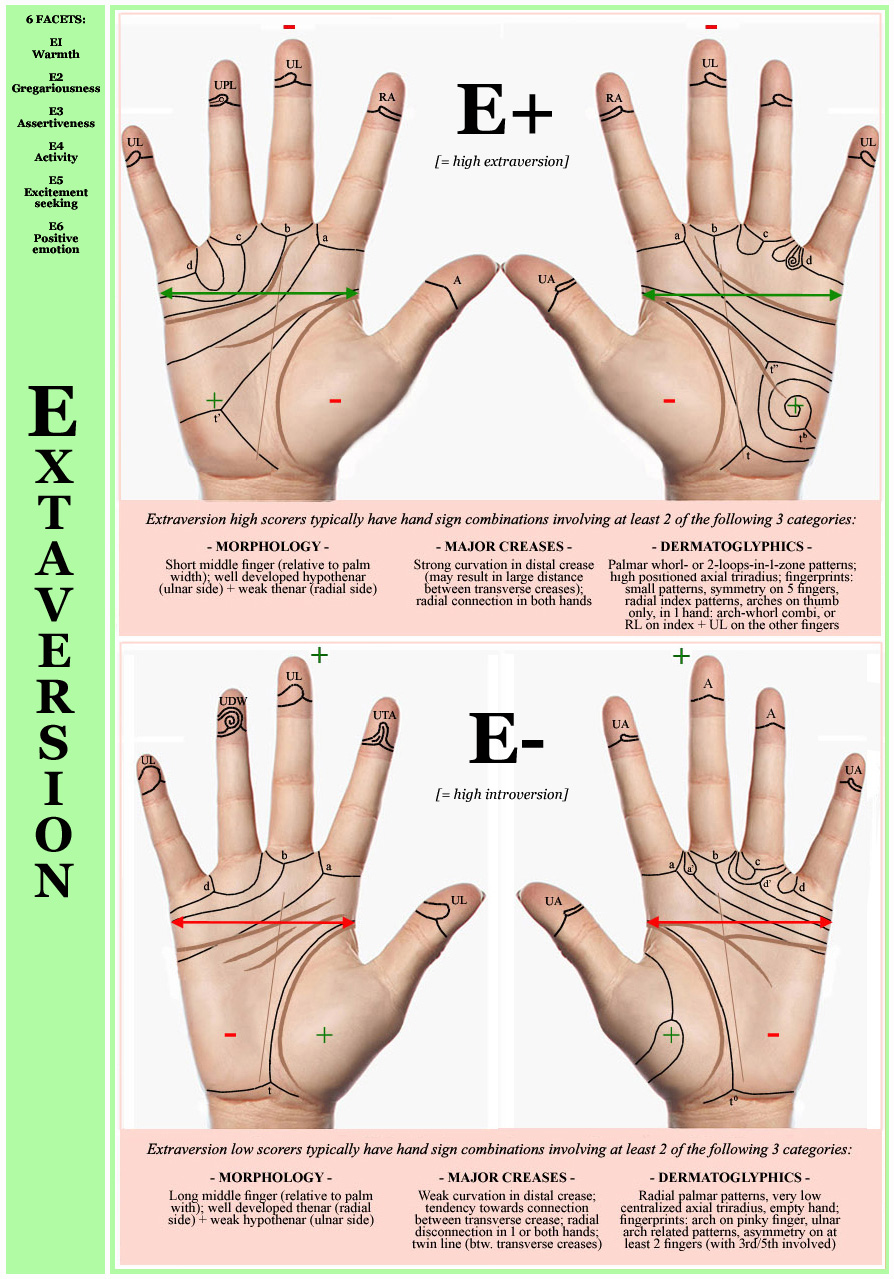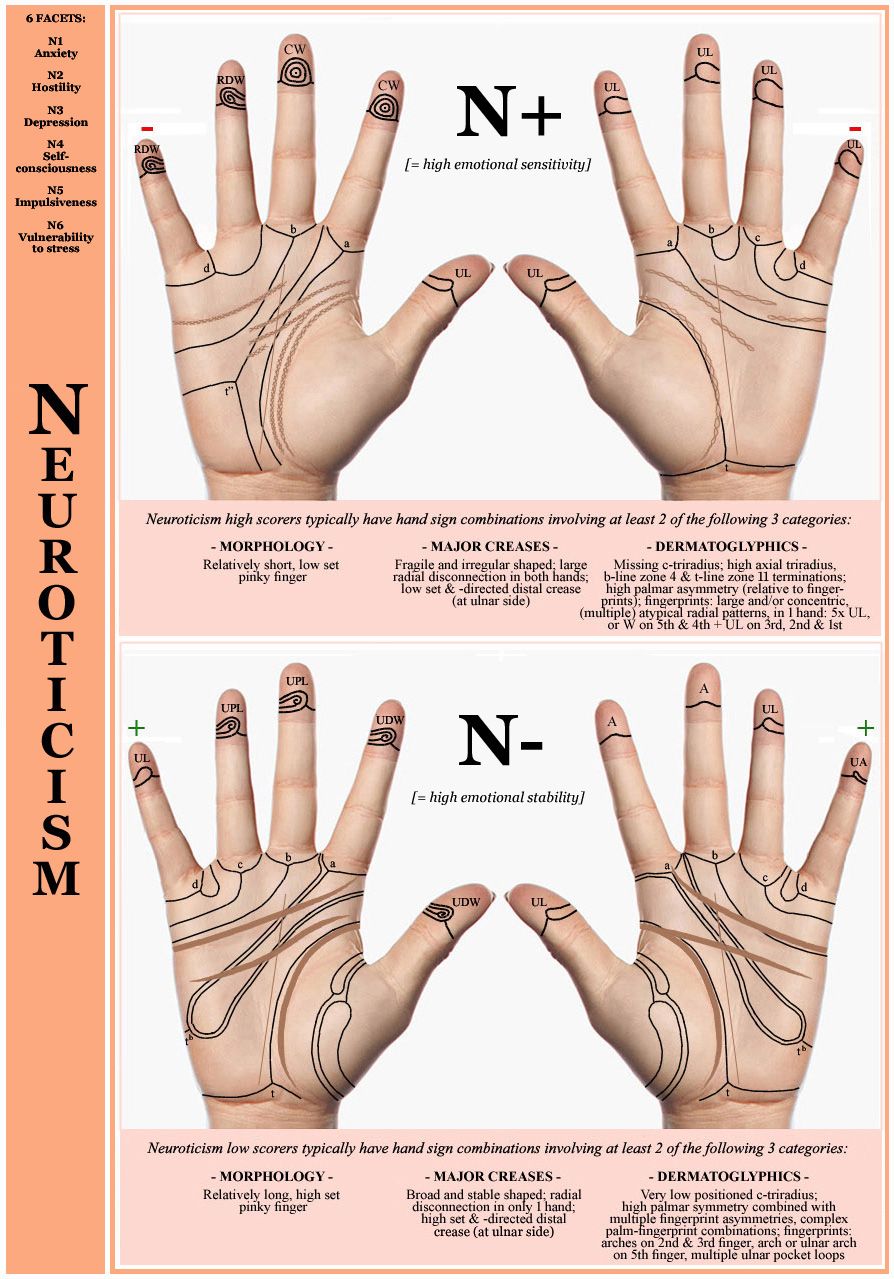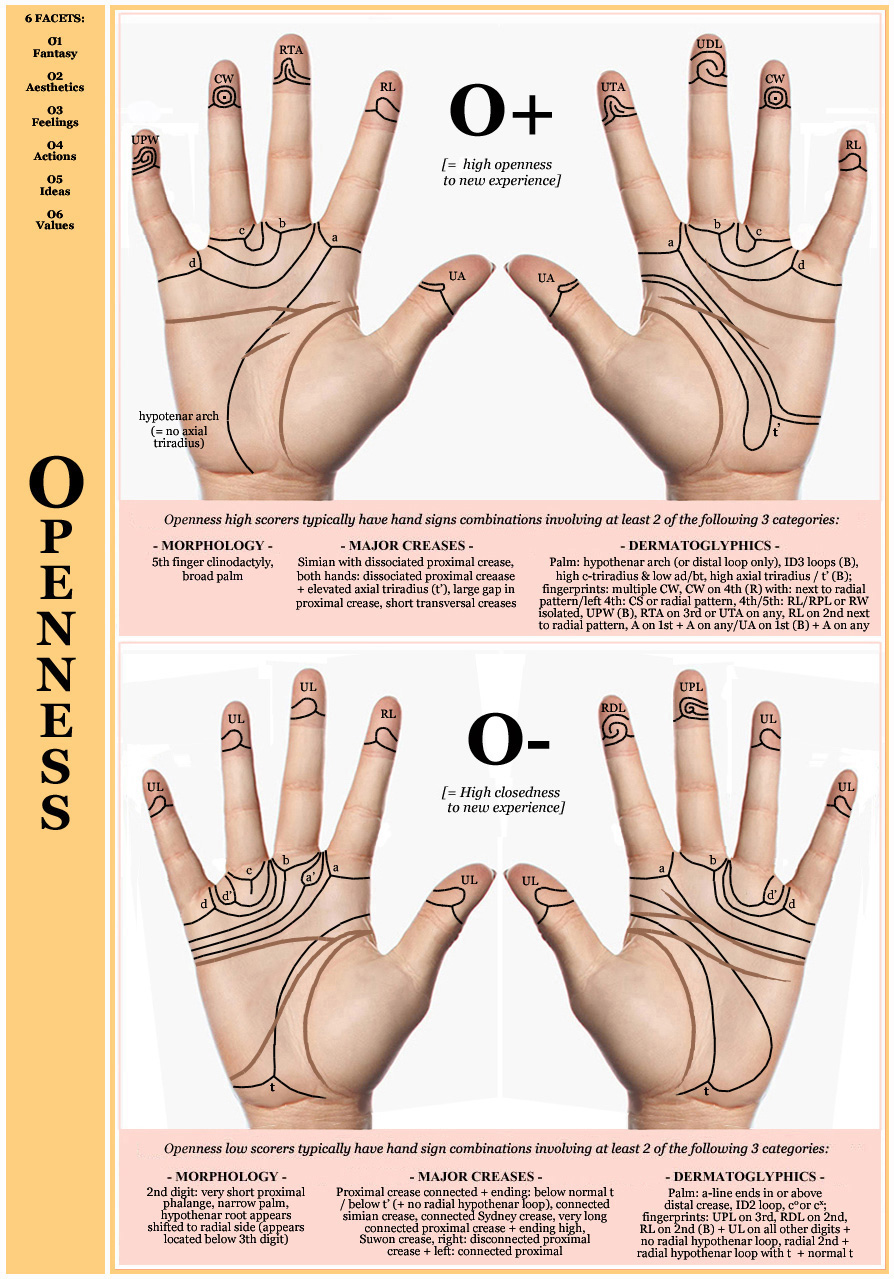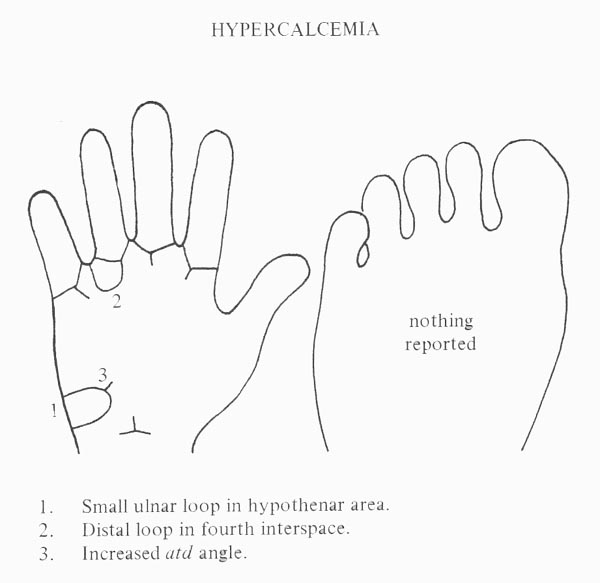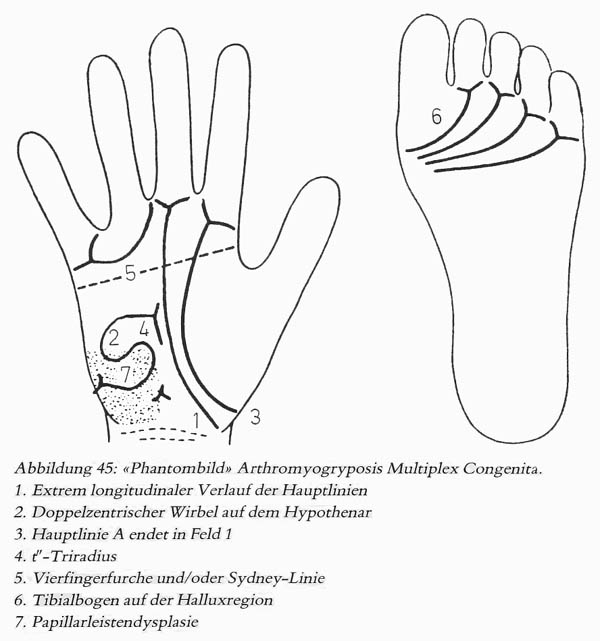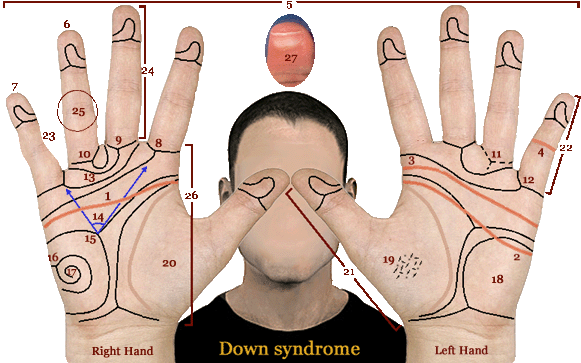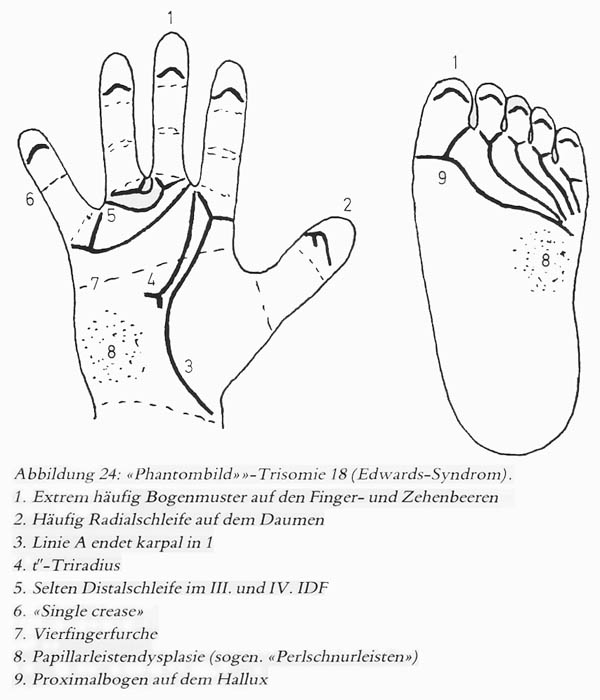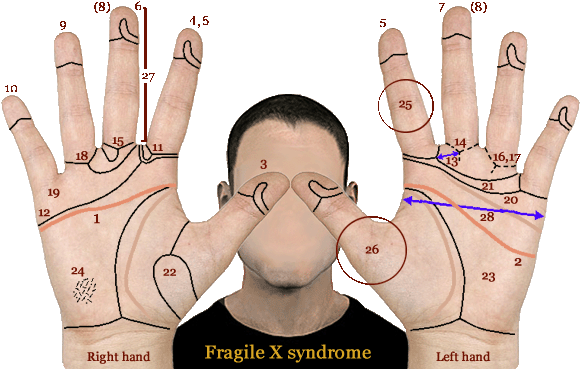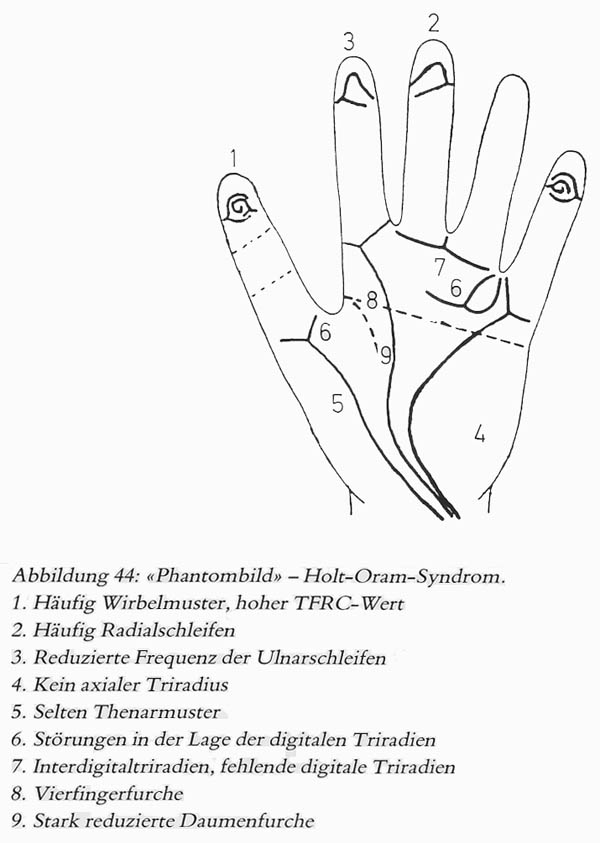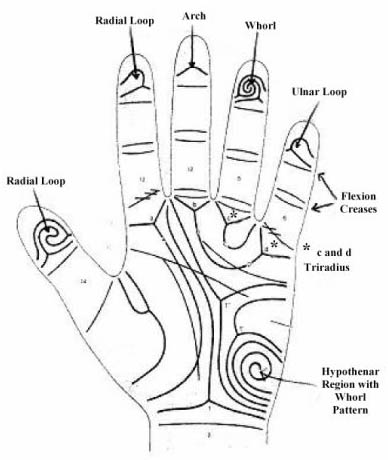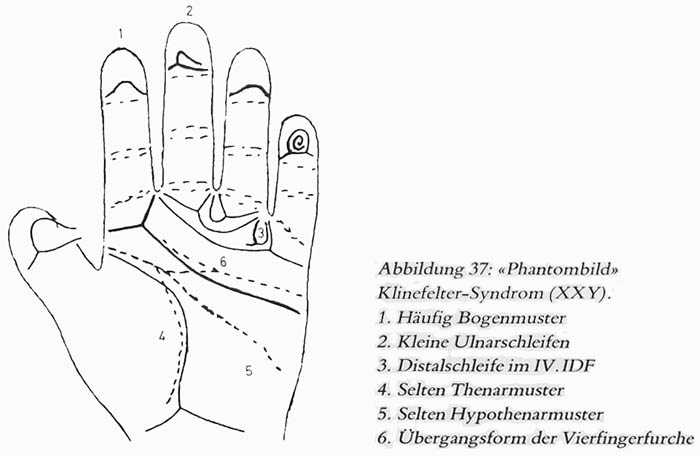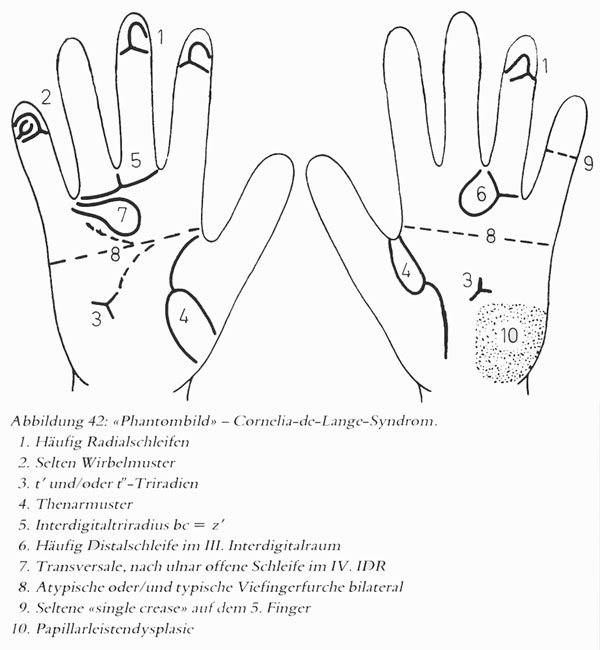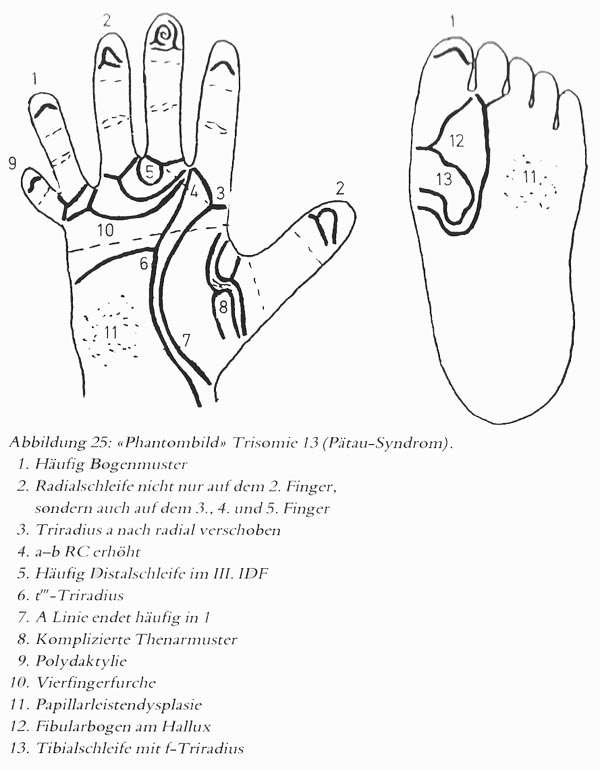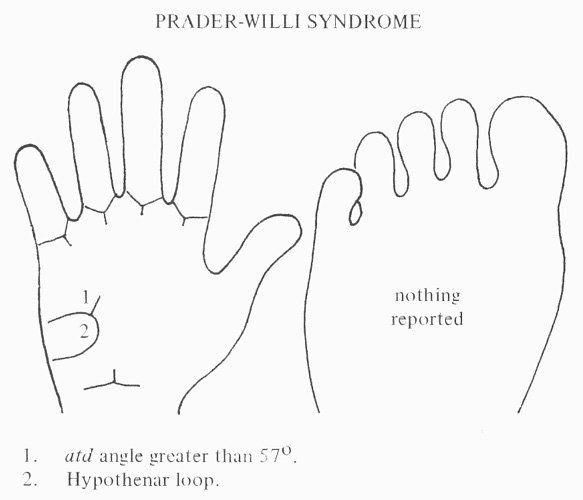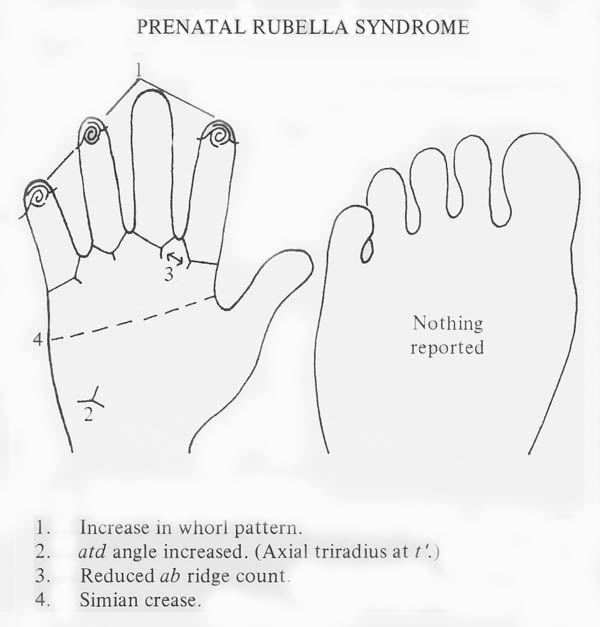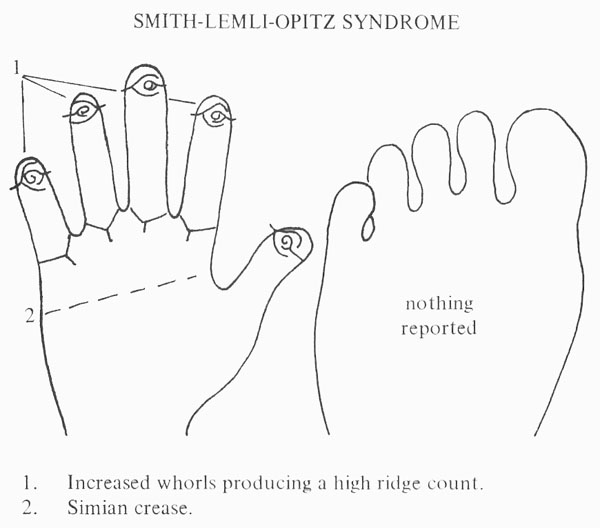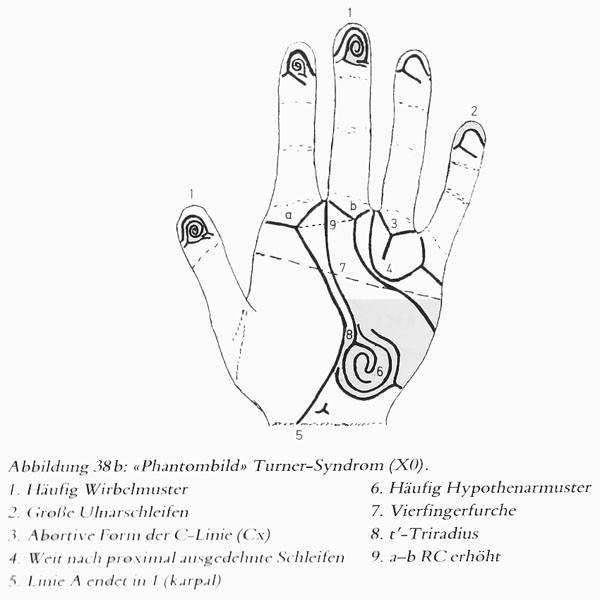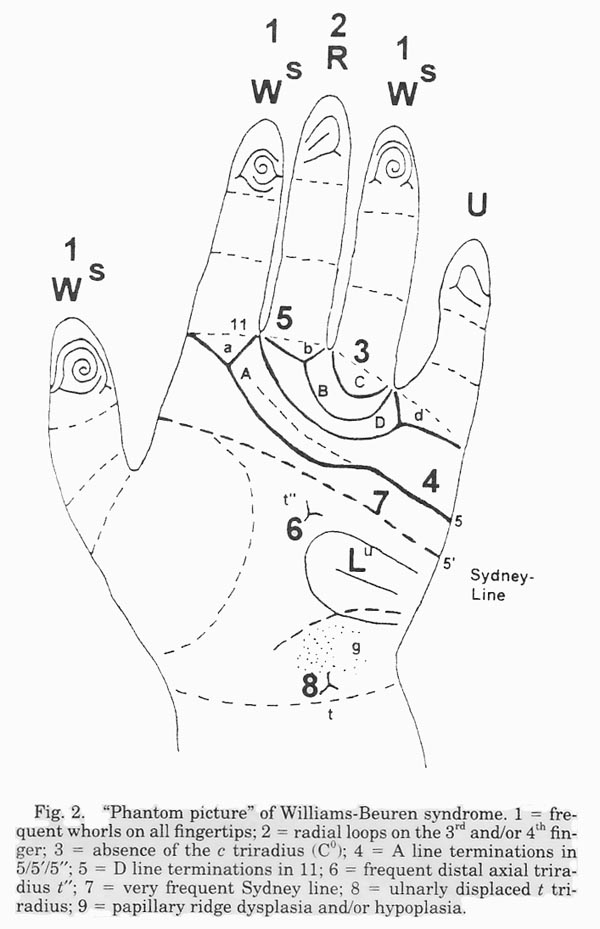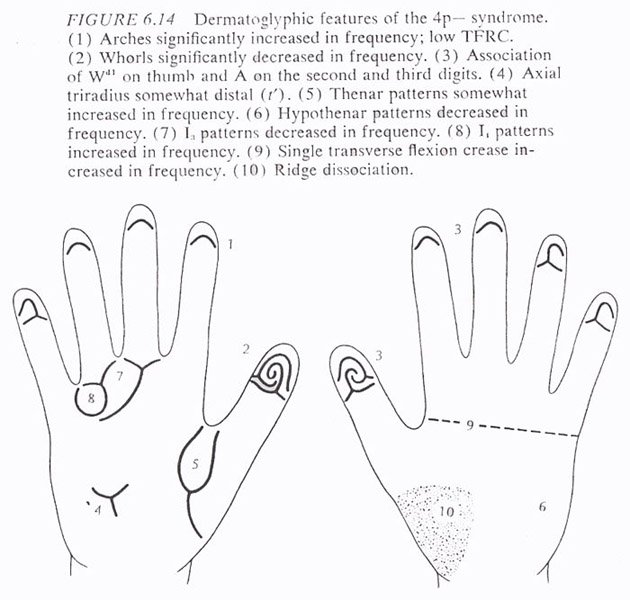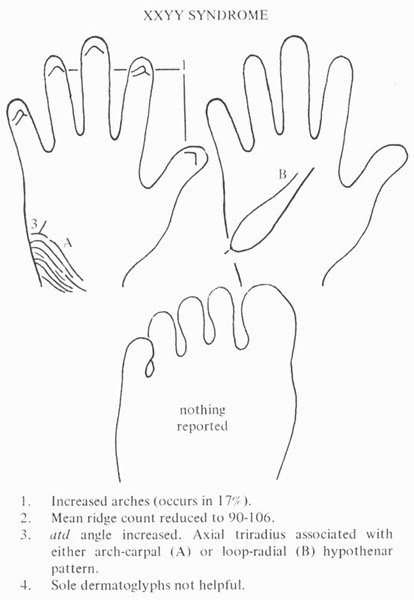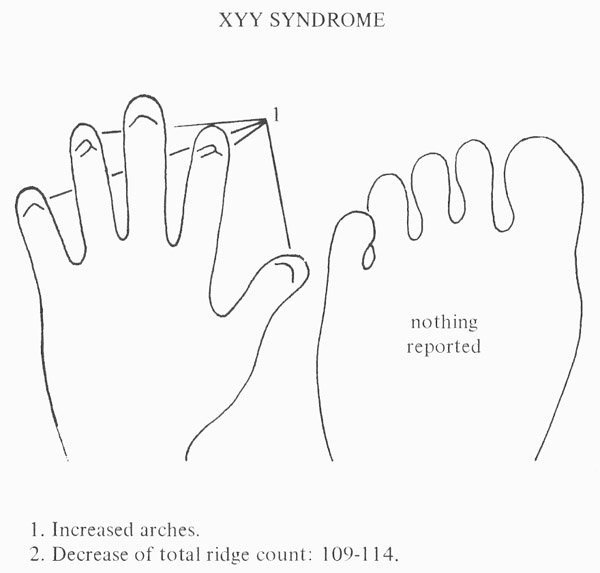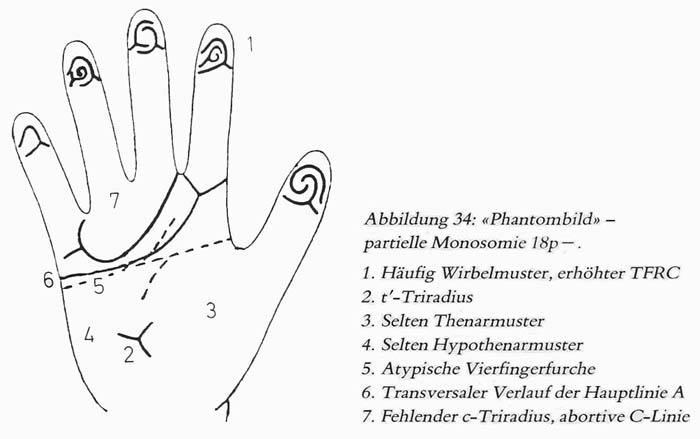
Scientific Hand Charts Collection:
Cri-du-Chat syndrome!
4 Hand Charts for Cri-du-Chat syndrome!
Cri-du-chat syndrome (= cat cry syndrome or Lejeune's syndrome) also known as chromosome 5p- syndrome, is a rare genetic disorder due to a missing part of chromosome 5. Its name is a French term (call of the cat) referring to the characteristic cat-like cry of affected children, often featured with developmental & behavioral problems.
Prevalence: close to 1 in 30,000 live births have cri-du-chat syndrome.
Two hand charts are available for cri-du-chat syndrome describing the significance of various typical dermatoglyphic features often combined with a simian line (= single transverse flexion crease) - see pictures below.
NOTICE: Individual hand features described below should not get associated in isolation with any theme; only combinations involving multiple hand levels have potential for diagnostic purposes.
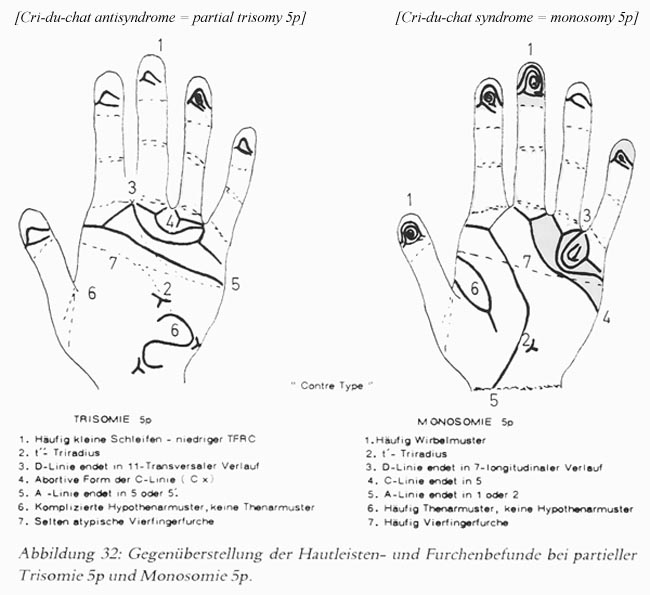
Hautleistenfibel (1981), p.79;
authors: A. Rodewald & H. Zankl
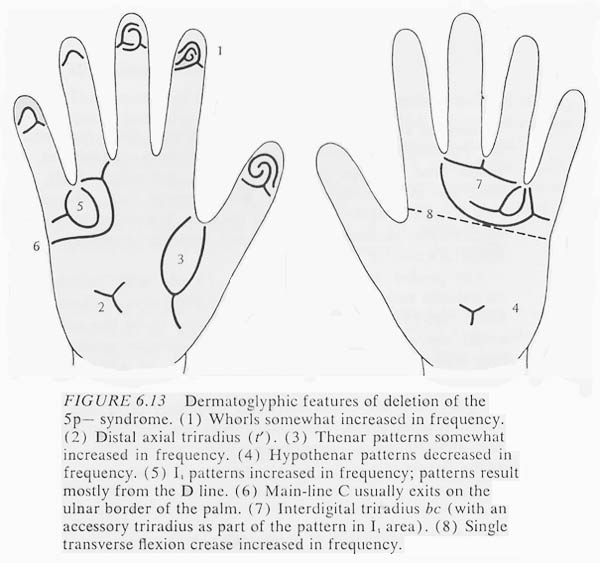
Dermatoglyphics in Medical Disorders (1976), p.186;
authors: B. Schaumann & M. Alter
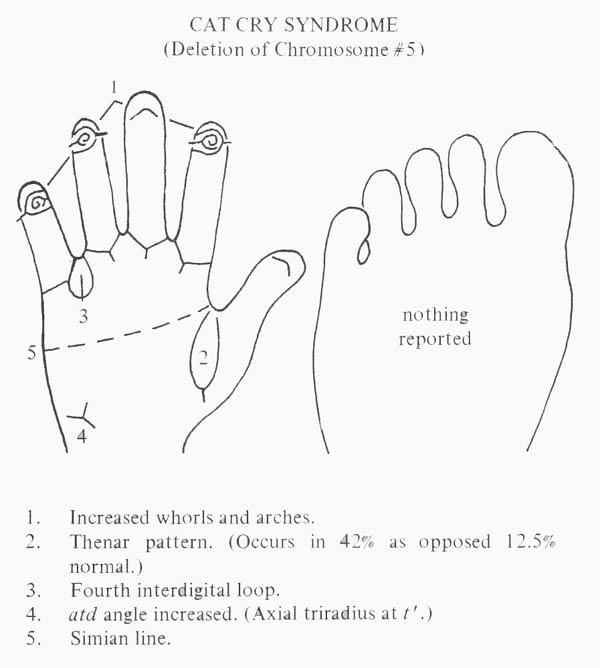
Handbook of Clinical Dermatoglyphs (1971), p.37;
authors: M.S. Elbualy & J.D. Schindeler
Other significant hand signs (not reported inside the hand charts):
Short fingers also represents a common finding in cri-du-chat syndrome.
Additionally, according Wikipedia there is also a considerable list of hand signs which are reported to represent less frequently encountered findings - including: clinodactyly of the 5th fingers, syndactyly of the second and third fingers, oligosyndactyly, and hyperextensible joints.
Slightly short hand bones is also reported, involving especially the palm (source: K. Fenger & E Niebuhr, 1978): "Various measurements were performed on the hand radiographs of 32 Danish cri-du-chat probands. ... The hands were smaller than in normal persons of the same sex and age. In most of the probands, the 3rd, 4th, and 5th metacarpals were disproportionately short, and the 2nd, 3rd, 4th, and 5th proximal phalanges were disproportionately long. Only 1 case had a positive metacarpal sign."
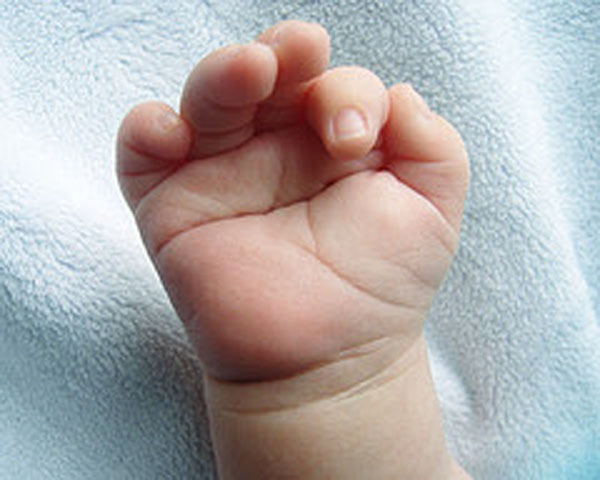
All significant hand signs listed above for cri-du-chat syndrome together cover five out of the nine perspectives of the hand as defined according Multi-Perspective Hand Reading (including hand level 2, 4, 5, 8 & 9).
A summary of the most significant hand sign combinations in cri-du-chat syndrome is described here:
Decoding the language of the hand:
hand sign combinations in cri-du-chat syndrome!
Hand charts are available for many other diagnostic issues;
start browsing HERE
![]() SCIENTIFIC HAND CHARTS: Introduction
SCIENTIFIC HAND CHARTS: Introduction
Hand charts for Big Five personality dimensions:
• Hand chart(s) for Agreeableness (2x: 1 in 4 people)
• Hand chart(s) for Conscientiousness (2x: 1 in 4 people)
• Hand chart(s) for Extraversion (2x: 1 in 4 people)
• Hand chart(s) Neuroticism (2x: 1 in 4 people)
• Hand chart(s) Openness (2x: 1 in 4 people)
Hand charts for diseases:
• Hand charts for hypercalcemia (1 in 4,000 people)
Hand charts for syndromes:
• Hand charts for arthrogryposis (1 in 10,000 people)
• Hand charts for cri-du-chat syndrome (1 in 30,000 people)
• Hand charts for Down syndrome (1 in 700 live births)
• Hand charts for Edwards syndrome (1 in 6,000 live births)
• Hand charts for fetal alcolhol syndrome (1 in 500 people)
• Hand charts for fragile-X syndrome (1 in 5,000 people)
• Hand charts for Holt-Oram syndrome (1 in 100,000 live b.)
• Hand charts for Kabuki syndrome (1 in 32,000 people)
• Hand charts for Klinefelter syndrome (1 in 1000 males)
• Hand charts for de Lange syndrome (1 in 15,000 live births)
• Hand charts for Marfan syndrome (1 in 5,000 people)
• Hand charts for Patau syndrome (1 in 15,000 live births)
• Hand charts for Prader-Willi syndrome (1 in 15,000 births)
• Hand charts for Rubella syndrome (1 in 100,000 people)
• Hand charts for Rubinstein syndrome (1 in 200,000 births)
• Hand charts for SLOS (1 in 40,000 births)
• Hand charts for Turner syndrome (1 in 2,000 female births)
• Hand charts for Warkany syndrome (1 in 200,000 births)
• Hand charts for Williams syndrome (1 in 14,000 births)
• Hand charts for Wolf-Hirschhorn syndrome (1 in 50,000 b.)
• Hand charts for XXYY syndrome (1 in 30,000 male births)
• Hand charts for XYY syndrome (1 in 1,000 male births)
• Hand charts for 18 deletion syndromes (2 in 40,000 live b.)
NOTICE: Reflexology hand charts are not included in this section because the scientific foundation of any of such charts is actually unknown; nevertheless, you can read more about the fundamentals of such charts HERE.
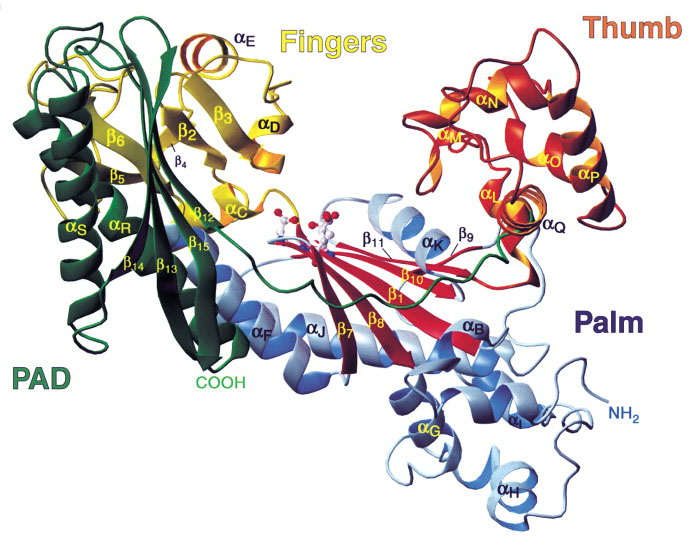
Other charts & maps:
• Fingerprints world map
• Hand reading experts world map
• Hand reflexology charts
